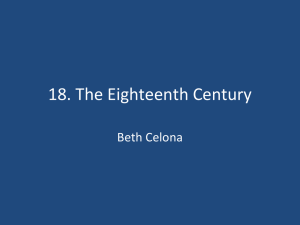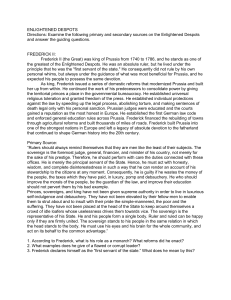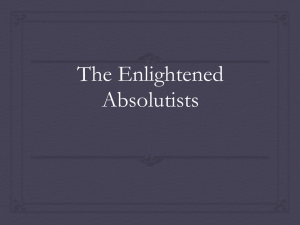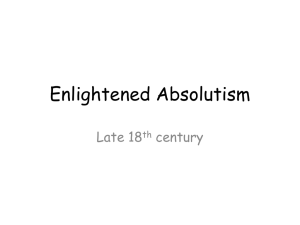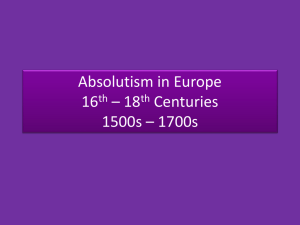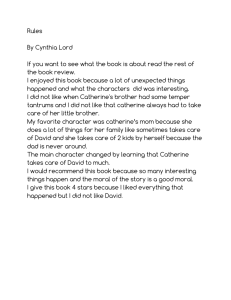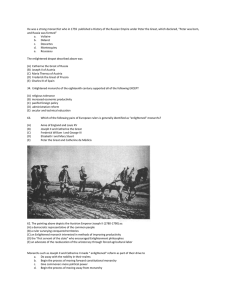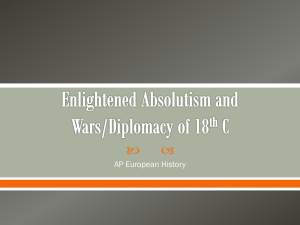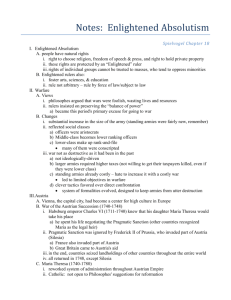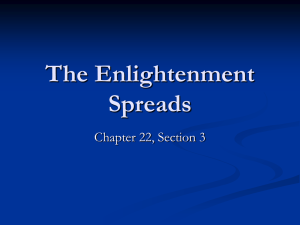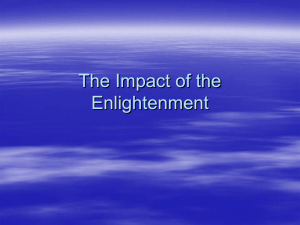The Enlightened Despots
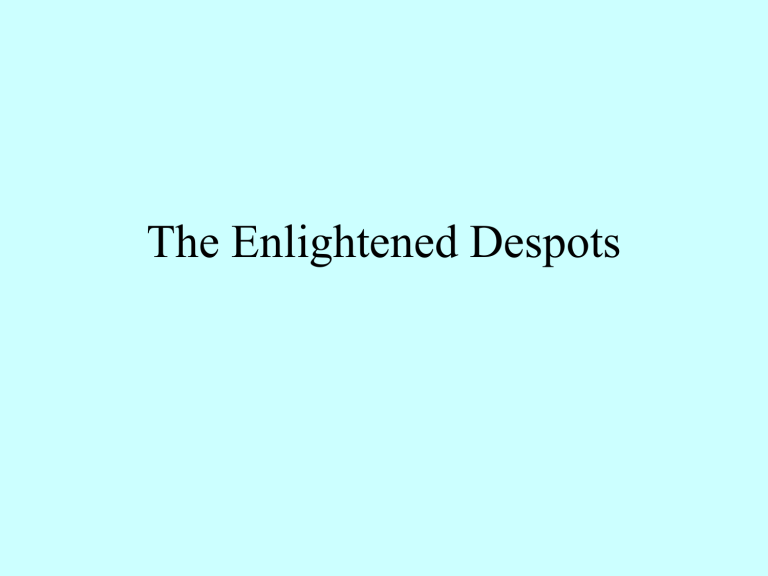
The Enlightened Despots
The enlightened despots came out of the old absolute monarchs
The idea of the state was changing.
They were dictators of a kind who tried to bring into their countries some of the ideas of the enlightenment.
The Seven Years War, with its high death tolls and mountainous debt made it a necessity for rulers to make their governments more efficient for tax purposes.
In France, the taille (tax) continued to be place on the third estate. Nobles were exempt.
Louis XV was a kind-hearted, yet prolifigate spender, who failed to push through much needed reforms.
He was, by all accounts a failure, who left glorious works of art as his legacy.
But it is in Austria, Prussia and Russia where the enlightened monarchs ruled to the benefit of their people.
Maria Theresa and Joseph
(1740-1780) and
(1780-1790)
After Maria’s husband died, Maria co-ruled with her son. She named him Emperor.
Maria tried to abolish serfdom. She regulated it so that peasants were not treated so harshly .
Her son wanted even more dramatic reforms…
As a true enlightened monarch, he abolished serfdom, established equal taxation. He reformed the criminal code.
He ordered toleration for religion and equal rights for
Jews.
But when nobles did not support his reforms, he used suppression and the secret police to thwart the rebellion…
So, consequently, he became ruthless and dictatorial against those who did not support his reforms.
Joseph has been called the
“revolutionary” emperor. A good man whose ideas were too advanced for the people he served.
He died disillusioned and brokenhearted.
Now, for Frederick the Great
(1712-1786).
After the end of the Seven Years War, Frederick ruled
Prussia for another 23 years. His life, like Voltaire’s spanned the enlightenment. He died only three years before the French Revolution.
He turned from war, to peace.
He did not pursue the radical changes of Joseph of Austria—he simply had the state run more efficiently and promoted honesty.
A famous statement of Frederick was when he called himself “The first Servant of the State.”
He did little to limit the power of the Junkers—the powerful landlords of East
Prussia
.
He was lofty, superior, and said that only he knew what was good for the people. He attended to every detail, neglected his dress, and became a beloved, eccentric monarch .
He did not train a successor—and the kingdom was left vulnerable after his death.
Our final monarch is
Catherine the
Great,
Tsarina of
Russia
(1762-1796)
She was born a
Germany, yet married Elizabeth’s nephew Peter, who was heir to the throne.
When
Elizabeth died, Peter made peace with whom?
Yes, Frederick the Great.
Peter was assassinated within six months, and in a military coup,
Catherine took the throne.
As a young girl and the rest of her life, she devoured books. Learning helped her to escape the palace intrigues of the Peter’s aunt, Tsarina Elizabeth.
As empress, she corresponded with Voltaire, and invited
Diderot to visit her in St.
Petersburg.
And there were all sorts of nasty rumors about her sexual appetites, passed about by her enemies, of course.
She began as an enlightened ruler…but had to put away those ideas when faced with revolts by different groups in her vast empire.
The old believers influenced
Pugachev’s rebellion.
Pugachev , a Cossack, proclaimed himself the true tsar.
He said he was really Peter III,
Catherine’s deceased husband.
This imposter promised that he would free the serfs, abolish taxes, and forced military conscription (draft)
Tens of thousands joined his forces…
.
They were at first successful, but eventually
Pugachev was captured.
He was brought to Moscow in an iron cage.
He was drawn and quartered, though Catherine ordered that he not be tortured during the trial.
Pugachev’s rebellion was the most violent peasant uprising in
Russian history.
Catherine responded by enforcing serfdom.
As a builder of Russia’s borders,
Catherine was more successful.
She gained an important port on the
Black sea, which became Odessa.
She also participated in the partition of
Poland.
She had many famous lovers, including Gregory Orlov and Potemkin.
Potemkin was the governor of the area along the Volga.
Catherine traveled down the Volga with the Austrian emperor Joseph II.
Hence the term
“Potemkin” village.
All the enlightened despots ruled from top down.
They could only do so much without the peoples’ participation.
They are seen as brilliant, but flawed, monarchs.
On continental Europe, they were the last great rulers.
After their reigns, and the revolution, the ideas of Kings and
Queens were seen as backward.
The time for more enlightened ideas— maybe even revolution had come….
